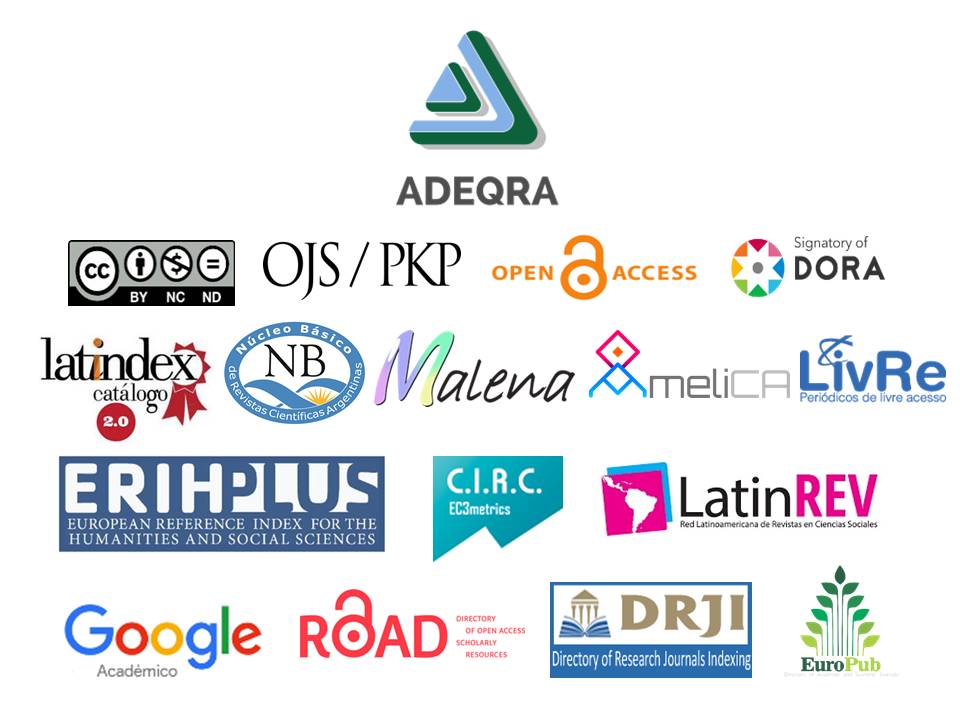Pandemic and the pedagogical continuity: reflecting on chemistry in the context of immunology and on remote emergency education
Keywords:
immunology, chemistry, emergency remote education, contextualizationAbstract
The current pandemic changed many aspects of life, including a direct impact on teaching practices, revealing the need for changes in higher education that may accompany today's sociocultural reality. Society's growing interest in topics related to the pandemic, such as the use of convalescent plasma and the development of vaccines, could act as a trigger that promotes the intrinsic motivation of students to understand chemistry and statistics. The aim of this work was to analyze different contextualization teaching strategies and remote emergency teaching. At first, different ways of introducing immunology in the explanation of other disciplines were developed. Then, a didactic strategy immunology learning used during the sanitary confinement based on the use of flipped classes and collaborative work was described. Considering the promising results obtained, it was analyzed its possible transfer to other disciplines and its potential post-pandemic application.
References
Bruner, J. (1988). Realidad mental y mundos posibles. Barcelona: Gedisa.
Campanario, J. (2002). Asalto al castillo: ¿a qué esperamos para abordar en serio la formación didáctica de los profesores universitarios de ciencias? Enseñanza de las ciencias, 20 (2), 315-325.
Cobo Romaní, C y Moravec, J. (2011). Aprendizaje Invisible. Hacia una nueva ecología de la educación. Barcelona: Publicacions i Edicions de la Universitat de Barcelona.
Fenstermacher, G. (1989) Tres aspectos de la filosofía de la investigación sobre la enseñanza. En M. Wittrock. La investigación de la enseñanza (pp. 150-158) Barcelona: Paidós.
Gardner, H. y Davis, K. (2014). La generación APP. Cómo los jóvenes gestionan su identidad, su privacidad y su imaginación en el mundo digital. Buenos Aires: Paidós.
Goldsby, R., Kindt, T. y Osborne, B. (2000). Immunology Kuby. (4ta edición). W H Freeman & Co (Sd).
Hodges, Ch., Moore, S., Lockee, B., Trust, T. y Bond, A. (2020). The Difference Between Emergency Remote Teaching and Online Learning. EDUCAUSE Review. Recuperado de: https://er.educause.edu/articles/2020/3/the-difference-between-emergency-remote-teaching-and-online-learning
Jackson, P. (2002). Práctica de la enseñanza. Buenos Aires: Amorrortu.
Lipsman, M. (2016). La innovación con tecnologías en las propuestas de enseñanza de grado. Buenos Aires: Noveduc.
Litwin, E. (2008). El oficio de enseñar. Condiciones y contextos. Buenos Aires: Paidós.
Lorenzo, M. G. (2017). Enseñar y aprender ciencias. Nuevos escenarios para la interacción entre docentes y estudiantes. Educación y Educadores, 20(2), 249-263.
Maggio, M. (2018). Reinventar la clase en la universidad. Buenos Aires: Paidós.
Maggio, M. (2012). Enriquecer la enseñanza: los ambientes con alta disposición tecnológica como oportunidad. (1a ed.). Paidós.
Maggio, M. (2005). Los portales educativos: entradas y salidas a la educación del futuro. En Litwin, E. (comp.) Tecnología Educativa en tiempos de Internet (pp. 35-70). Buenos Aires: Amorrortu.
Perkins, D. (1995). La escuela inteligente. Del adiestramiento de la memoria a la educación de la mente. Barcelona: Gedisa.
Perkins, D. (1993). La persona-más: una visión distribuida del pensamiento y del aprendizaje. En G. Salomon. Cogniciones distribuidas (pp. 126-152) Buenos Aires: Amorrortu.
Serres, M. (2013). Pulgarcita. Buenos Aires: Fondo de Cultura Económica.
Published
How to Cite
Issue
Section
License
Copyright (c) 2021 Silvina Lompardía

This work is licensed under a Creative Commons Attribution-NonCommercial-NoDerivatives 4.0 International License.



